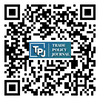ANALISIS RISIKO UNTUK PENGAWASAN IMPOR TERKAIT IMPLEMENTASI KEBIJAKAN POST BORDER
Keywords:
Kata kunci: post border, prioritas produk, analisis risikoAbstract
Ringkasan Eksekutif
Pemerintah mengeluarkan Paket Kebijakan Ekonomi XV yang kemudian menghasilkan kebijakan post border dalam rangka meningkatkan daya saing dan menurunkan lamanya dwelling time. Peraturan Menteri Perdagangan Nomor 51 Tahun 2020 tentang Pemeriksaan dan Pengawasan Tata Niaga Impor Setelah Melalui Kawasan Pabean (Post Border) memberikan kewenangan pengawasan kepada Direktorat Jenderal Perlindungan Konsumen dan Tertib Niaga dan juga didukung oleh Balai Pengawasan Tertib Niaga (BPTN). Seiring berjalannya waktu, implementasi kebijakan post border menghadapi kendala yang disebabkan oleh keterbatasan anggaran dan sumber daya manusia sehingga fungsi pengawasan dan pemeriksaan barang post border kurang maksimal. Untuk meningkatkan efektifitas pemeriksaan dan pengawasan, pemerintah menetapkan prioritas pengawasan produk post border dengan menggunakan pendekatan analisis risiko. Dari hasil penghitungan analisis risiko, diperoleh produk dengan risiko tinggi, yaitu produk hewan, makanan dan minuman, pakaian jadi dan aksesoris pakaian jadi, elektronik, kosmetik dan perbekalan kesehatan rumah tangga, serta bahan baku plastik.
Kata Kunci: post border, prioritas produk, analisis risiko
Executive Summary
The government issued an Economic Package of XV policy which then produced post-border policy in order to increase the competitiveness and decrease port dwelling time. The Ministry of Trade Regulation number 51/ 2020 regarding the inspection and surveillance of the import trade system post customs area, gives oversight authority to the Directorate Generals of Consumer Protection and Commerce Compliance and supported by an Supervision of Commerce Compliance Agency(BPTN). With time , post-border policy implementation is facing obstacles caused by the budget limitation and human resources so that the function of surveillance and the check of post-border goods is not optimal. To increase the effectiveness of inspection and surveillance, the government sets a priority on the surveillance of post-border products using the approach of risk analysis. From the results of the calculated risk analysis, obtained high-risk products that are animal products, food and drink, garments and accessories, electronics, cosmetics and health supplement, and raw material of plastic.
Key Words: post border, priority products, risk analysis
References
Armstrong & Associates. 2023. https://www.3plogistics.com/3pl-market-info-resources/3pl-market-information/global-3pl-market-size-estimates/ [diunduh 18 Februari 2023]
Firdiansyah, A., & Nugroho, A. S. (2017). Evaluasi kebijakan pemeriksaan fisik barang pada Direktorat Jenderal Bea dan Cukai. Jurnal Perspektif Bea dan Cukai, 1(1), 1-9.
Hillberry R, B Karabay, SW Tan. 2021. Risk Management in Border Inspection. Policy Research Working Paper 9438 (update version). World Bank Group. Finance, Competitiveness and Innovation Global Practice.
Manzoni J, Chesire I 2017. Management of Risk in Government of Framework for Board and examples of what of work in practices. A non-executive review. https://www.researchgate.net
Pambudi H 2017. Jenis Pelanggaran yang Paling Sering Dilakukan Importir. (https://www.republika.co.id/berita/ot2nbr/jenis-pelanggaran-yang-paling-sering-dilakukan-importir) 29 April 2023.
Rosenblum G.R., Lapp S.A. (1989) The Use of Risk Index Systems to Evaluate Risk. In: Bonin J.J., Stevenson D.E. (eds) Risk Assessment in Setting National Priorities. Advances in Risk Analysis, vol 7. Springer, Boston, MA








 Trade Policy Journal
Trade Policy Journal
